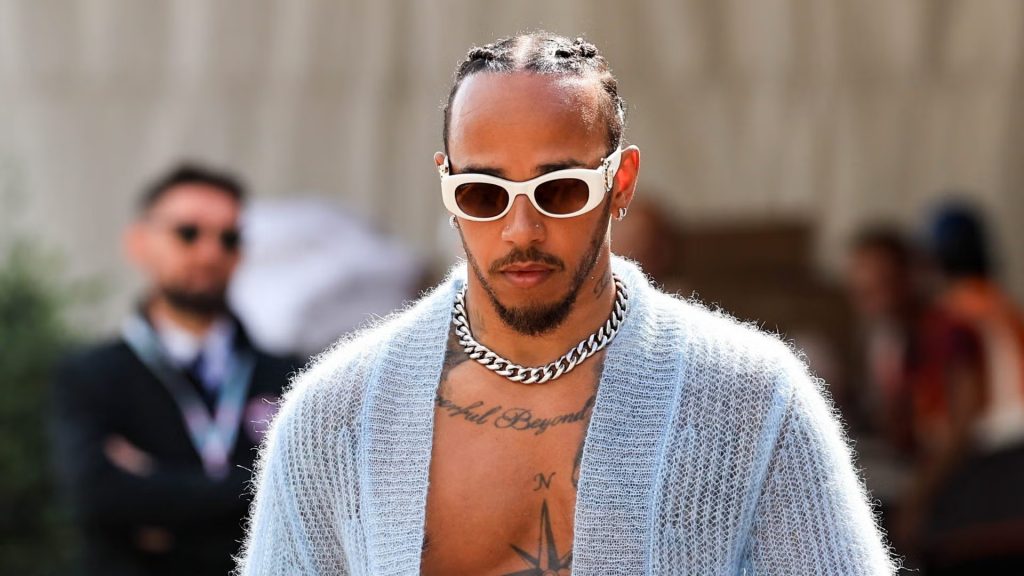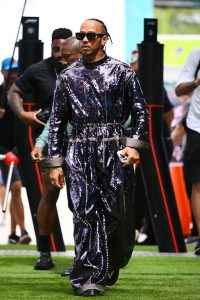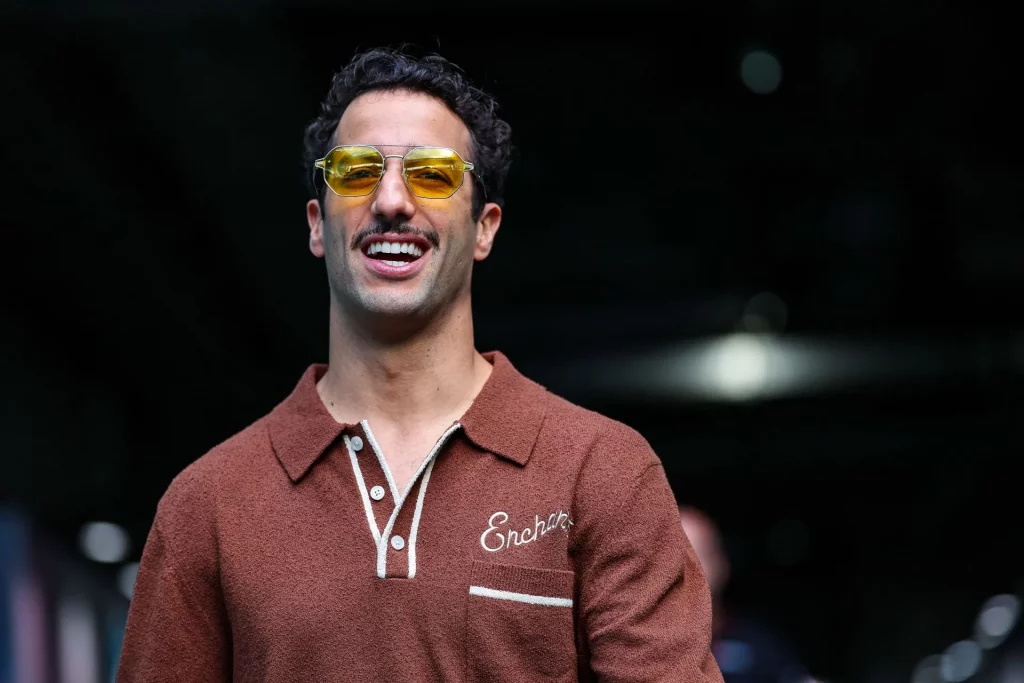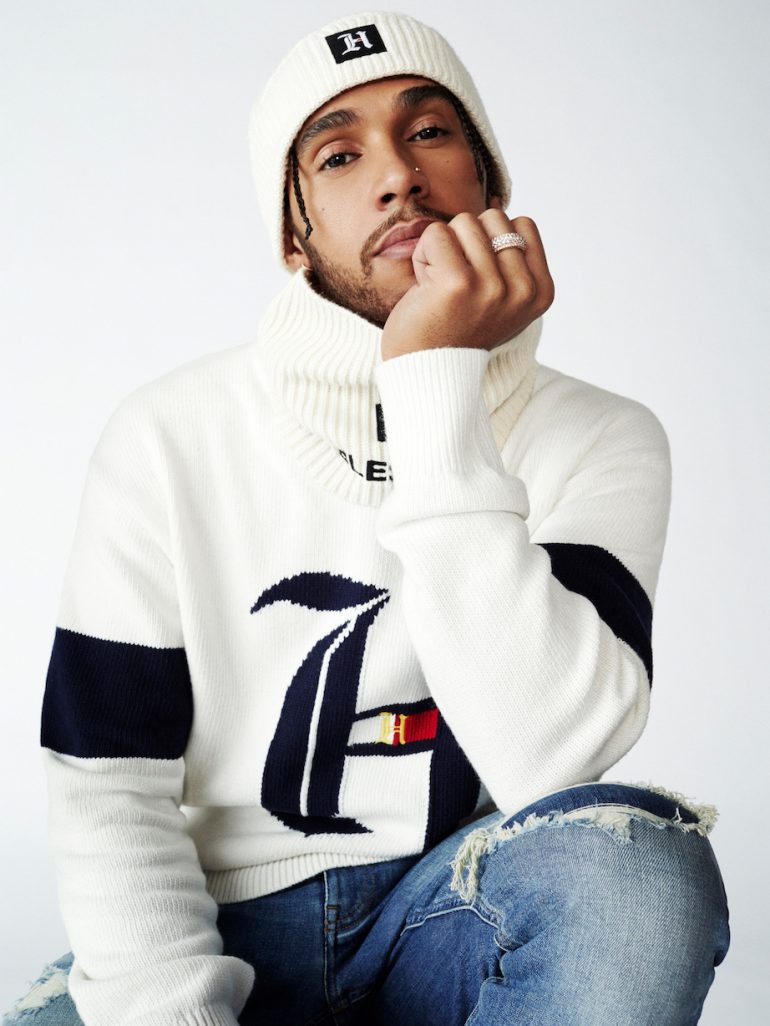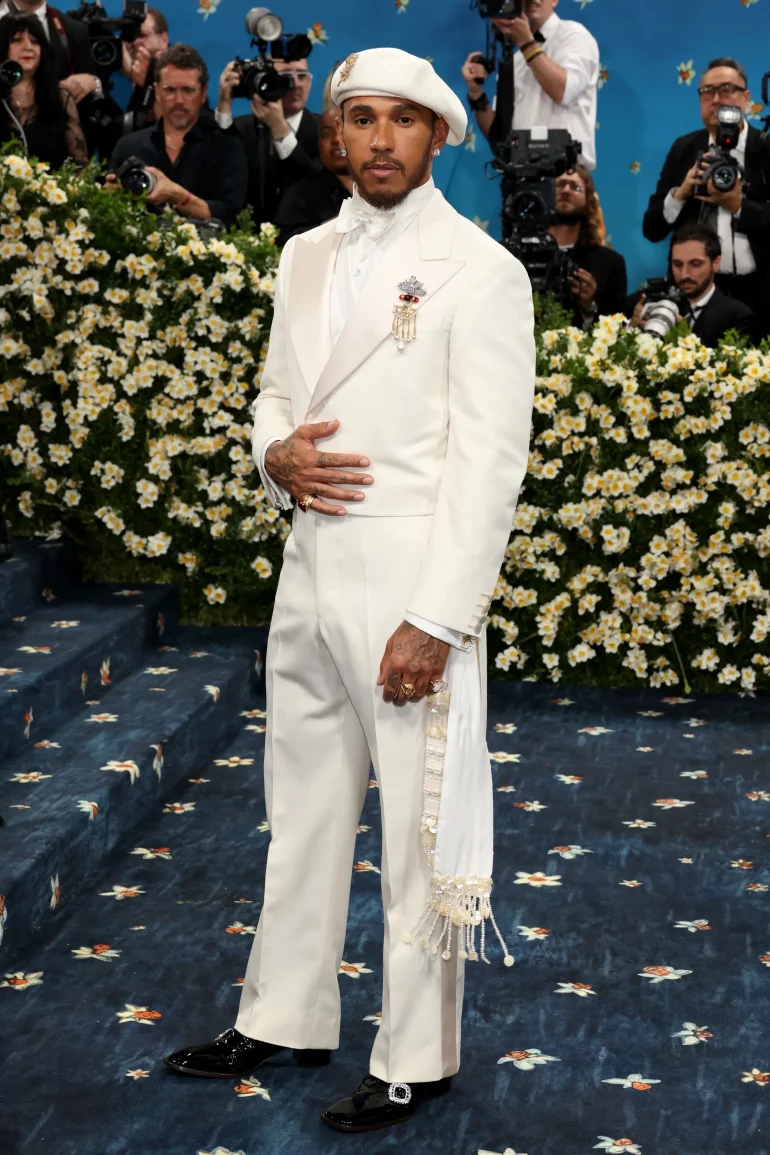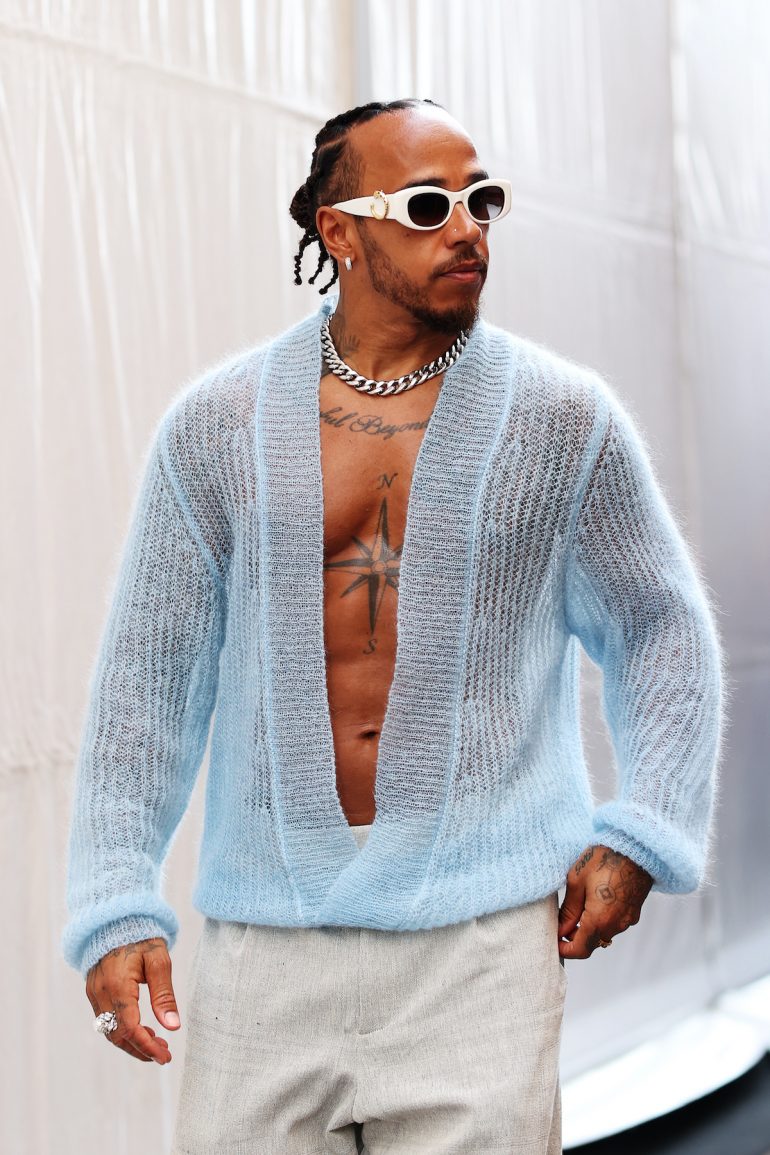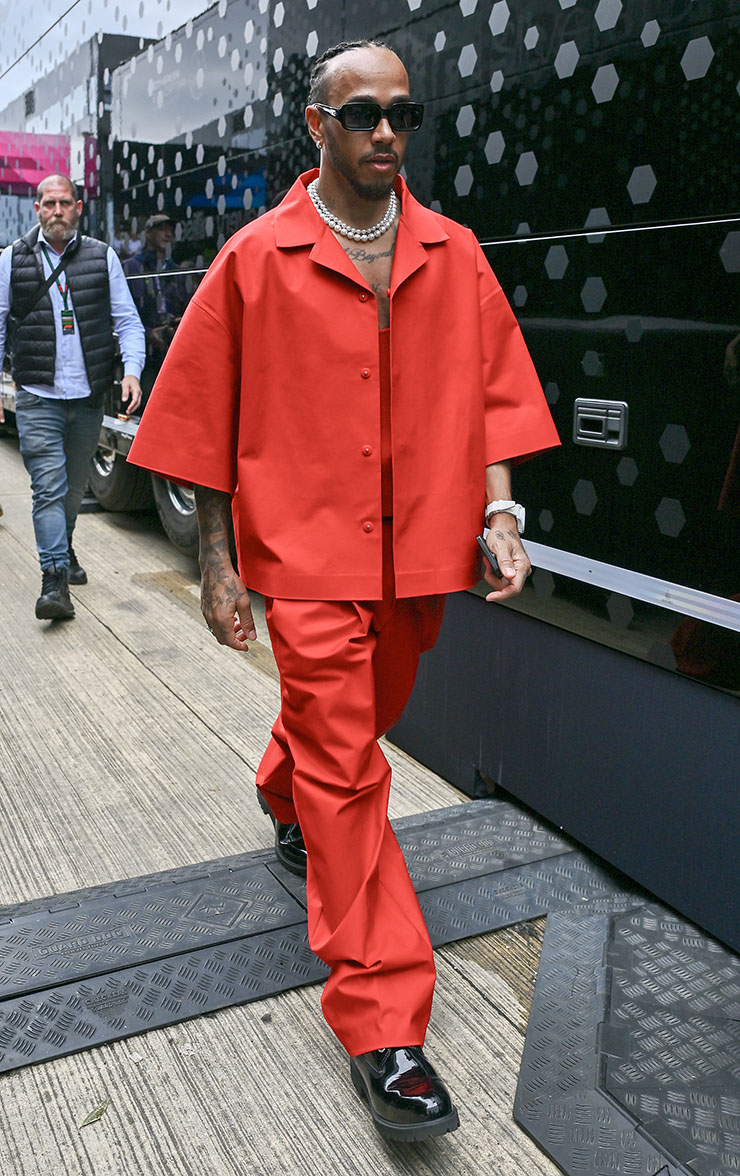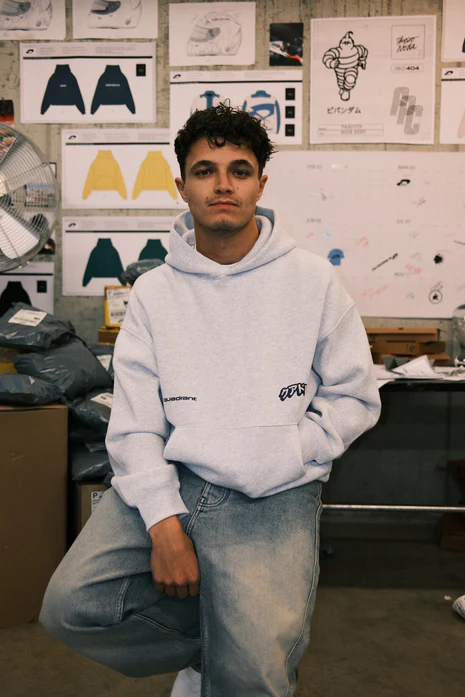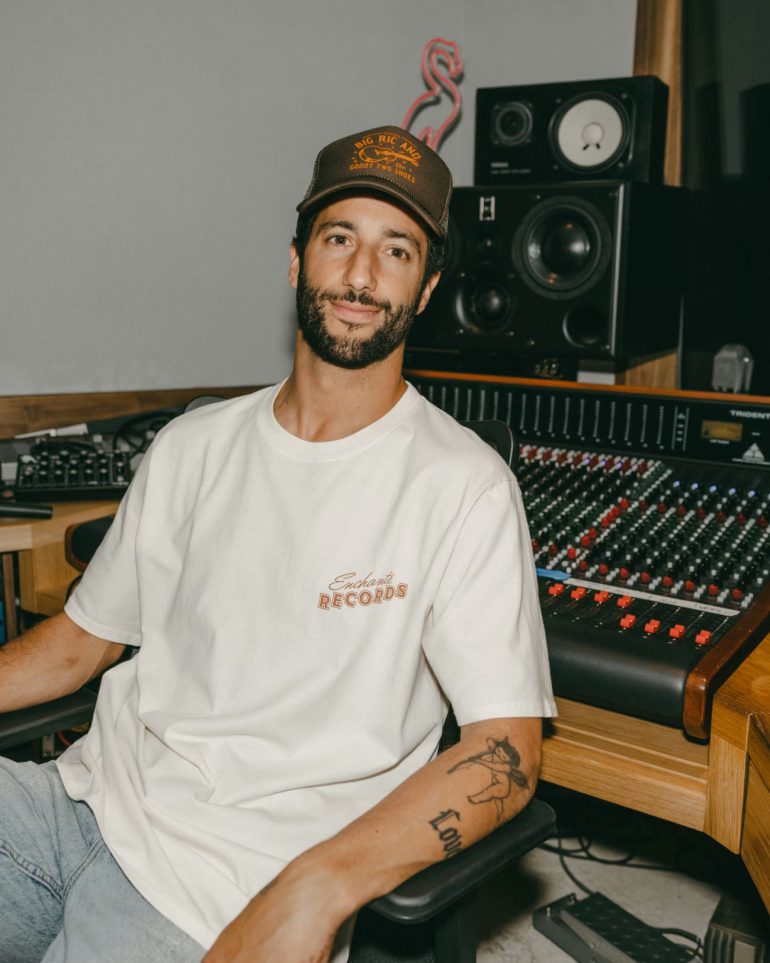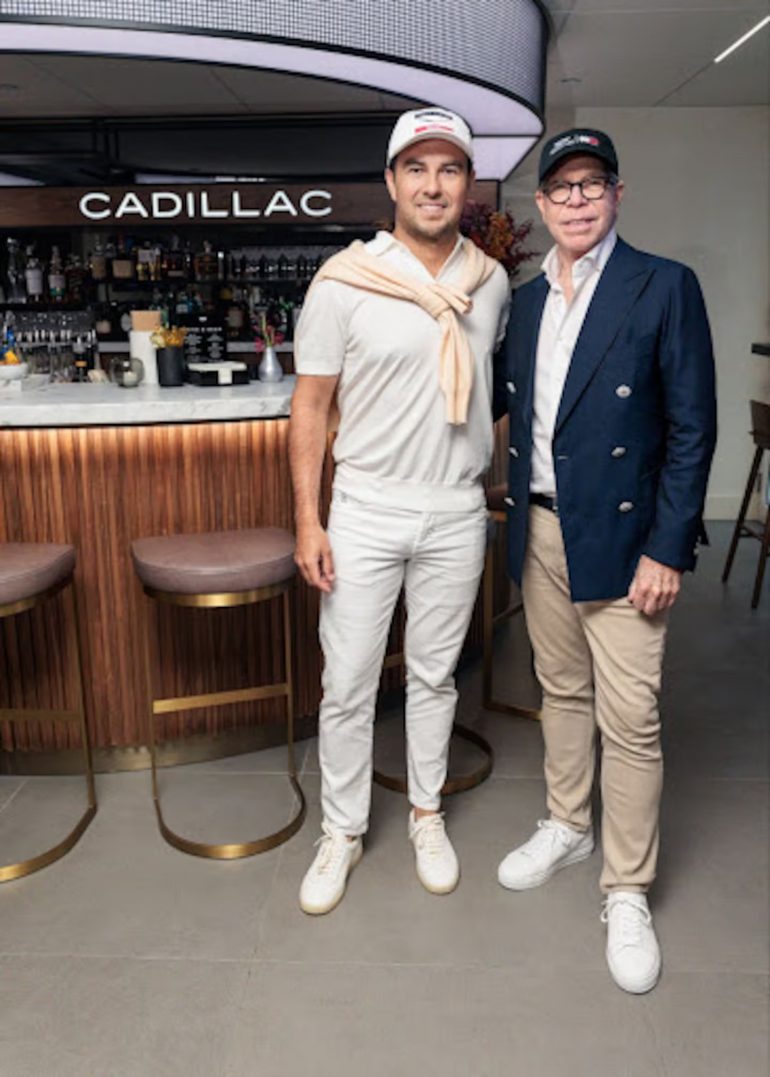Lewis Hamilton walked onto the 2025 Met Gala’s blue carpet wearing a custom suit by London designer Grace Wales Bonner and a Stephen Jones Millinery beret. An Asscher-cut 1980s Briony Raymond brooch and diamond earring contrasted the ceremonial cowrie shells and baobab flowers adorning his sash. Fresh from the Miami Grand Prix, the seven-time world champion arrived at the Metropolitan Museum of Art as co-chair, standing alongside Colman Domingo, A$AP Rocky, Pharrell Williams, and Anna Wintour to celebrate “Superfine: Tailoring Black Style.”
This was Hamilton’s eight time attending the Met Gala, but his first as a co-chair. The appointment came after years of Hamilton buying tables to bring Black designers like Edvin Thompson of Theophilio and Kenneth Nicholson, after his Hilfiger and Dior collaborations, and after using every platform available to create space for those typically excluded from these rooms. His participation marked his belonging at fashion’s highest table, earned through deliberate action, rather than celebrity access.
“Naturally, I hope this year’s Met Gala sparks conversation and reconfirms the connection between fashion and self-expression, and how deep it runs in Black culture,” he said of this year’s theme in an interview. “I hope it allows us to show that we have ownership of our identity and how we see ourselves and how we see one another, and how we use fashion to combat preconceived notions with humanity and dignity. If you think about where we are in the world, and particularly in the States, in terms of people pulling back on diversity, I think this Met Gala sends a really strong message that we must continue to celebrate and elevate Black history.”
Lewis Hamilton fundamentally transformed the Formula 1 paddock into a legitimate fashion runway, using clothing as both personal armor and cultural disruption within a traditionally conservative sporting environment. When he first arrived in Formula 1, Hamilton was restricted to wearing suits and team kit, operating within a space that wasn’t remotely diverse and followed an insider culture of conformity. Lewis was challenged when he deviated from the standard, asked to cover his tattoos, and fined for wearing jewelry. This restrictive atmosphere catalyzed what would become one of sport’s most significant stylistic revolutions.
The watershed moment in Hamilton’s fashion journey arrived through his partnership with Tommy Hilfiger, beginning in March 2018 when he was announced as a global ambassador for Tommy Hilfiger. This collaboration transcended typical celebrity endorsements; Hamilton became deeply involved in every design decision, from selecting buttons and fabrics to determining washes for denim. The TommyXLewis collections, which debuted in fall 2018 and continued through multiple seasons, featured Hamilton’s personal aesthetic touchstones: his lucky number 44, Old English Gothic typesets inspired by his tattoos, and a sophisticated blend of streetwear with luxury tailoring. By 2019, during their third collection presentation in Milan, Hamilton had pushed the boundaries further, creating unisex pieces that reflected his observation of fashion’s increasing gender fluidity.
Perhaps no single outfit better exemplifies Hamilton’s transformative impact than his custom purple sequined Rick Owens jumpsuit at the 2023 Miami Grand Prix. The piece, which Hamilton himself initially doubted he could pull off, became the defining image of F1’s fashion renaissance. Adorned with thousands of individual sequins and paired with Dr. Martens x Rick Owens boots and Louis Vuitton sunglasses, the ensemble represented a radical departure from paddock conventions.
Hamilton’s Dior partnership began with a winter lifestyle capsule in 2024, evolving into a second collection that explored Afrofuturism following his travels through Morocco, Senegal, Mozambique, Benin, and Madagascar. The pieces drew from those experiences, translating them through performance wear, streetwear, and tailored pieces, with leopard-print tweed appearing across shorts, hooded jackets, and shirts. The B44 sneakers came in gradient metallics. Bags used sustainable materials with climbing-rope trim.
Throughout 2024, Hamilton continued this sartorial revolution with looks ranging from custom Dior pieces at the Mexican Grand Prix, featuring white embroidered felted wool Austrian jackets, to his symbolic transition from Mercedes to Ferrari at the Abu Dhabi Grand Prix in December 2024, where his outfits gradually shifted from silver to red across the race weekend, orchestrated with stylist Eric McNeal.
Hamilton’s success opened doors for other drivers to see fashion as legitimate territory for building influence and wealth beyond the track. The opportunities were there for those willing to claim them: to build brands that reflected personal identity rather than team allegiance.
Lando Norris launched Quadrant in 2020 during pandemic lockdowns. It began as a gaming and content brand, bringing together YouTube creators and streamers under one platform. The apparel started as a supporting element, with hoodies and graphic tees that reflected Norris’s interests and generation; bright and playful and firmly Gen Z. By 2025, fashion had become central to Quadrant’s identity. Veloce Media Group’s acquisition of a majority stake in Quadrant valued the brand’s reach at 750 million monthly views and 55 million subscribers across platforms. Norris retained over twenty percent ownership while becoming a shareholder in the Adrian Newey-backed company, the business structure reflecting how driver brands now operated as serious media enterprises, rather than merchandising side projects.
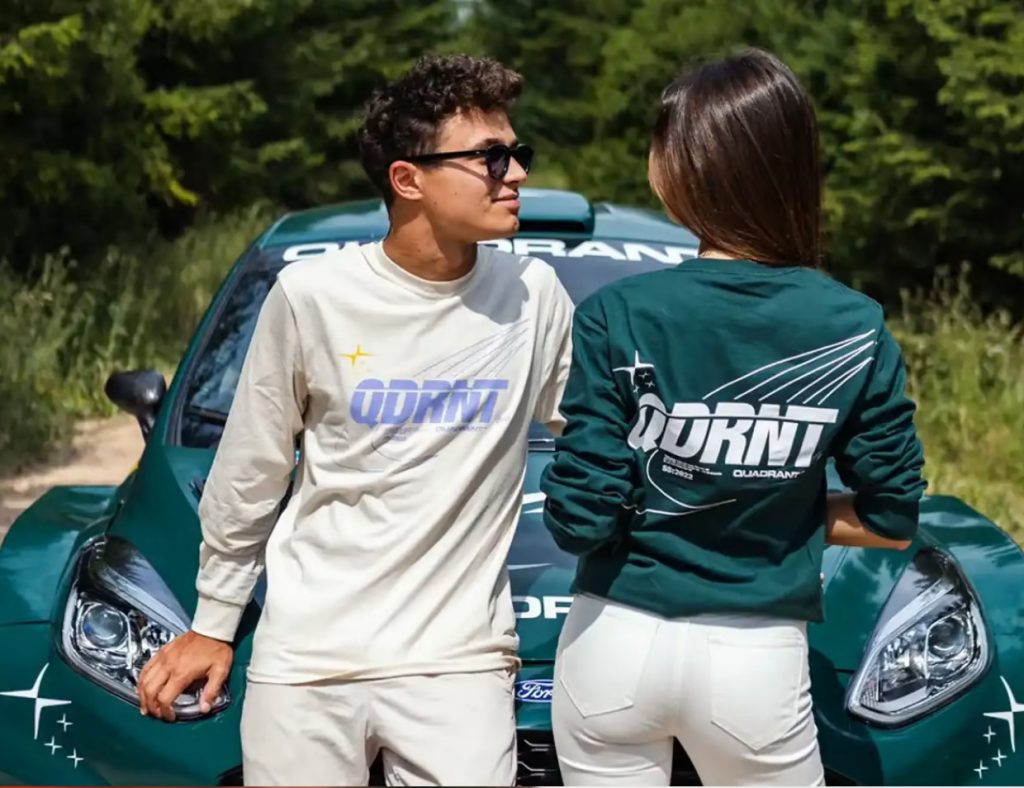
Daniel Ricciardo launched his brand, Enchanté in 2023, to create clothing that could move from racing to street. The collections feature pieces designed for everyday wear: knits, oversized tees, and casual separates influenced by Ricciardo’s travels and personal style. In 2025, Enchanté partnered with Daniel’s former team, Visa Cash App Racing Bulls (VCARB) on a line that supports Rafaela Ferreira and VCARB’s effort to develop female drivers through the F1 Academy program. It features Enchanté’s logo on Ferreira’s livery and a co-branded apparel line that merges the brand’s aesthetic with the team’s identity. The collaboration was well-received; pieces sold out in days. It was viewed as an authentic extension of Ricciardo’s personality and an innovative way to connect his personal brand with his ongoing affiliation to the Red Bull family’s wider motorsport ecosystem, even after his departure as a driver from F1.
The transformation Hamilton pioneered now attracts fashion’s most prestigious houses to Formula 1 as creative partners. Louis Vuitton’s 2024 partnership with Formula 1 transcended traditional sponsorship, bringing the French house’s atelier craftsmanship to create bespoke trophy trunks and exclusive race weekend pieces. Ferrari’s appointment of Rocco Iannone as creative director for their 2025 collections signaled how teams were restructuring to accommodate this new reality, hiring from fashion houses rather than sportswear companies. Tommy Hilfiger’s “lifestyle partnership” with Cadillac F1 Team has the American house designing everything from race suits to hospitality spaces, treating the team’s visual identity as they would a flagship collection. These partnerships represent fashion brands competing for Formula 1 associations the way they once pursued celebrity ambassadorships, recognizing the paddock as legitimate creative territory worth serious investment.
The convergence of fashion and Formula 1 now extends beyond individual expression into institutional change.The upcoming regulations for 2026 include provisions for “personal expression windows” during race weekends, formally codifying the freedom of personal style that Hamilton fought to establish. Fashion weeks in Milan, Paris, and London now schedule around the F1 calendar, recognizing that the paddock generates more engagement than many runway shows. The economic implications are substantial: driver fashion partnerships now command fees comparable to traditional team sponsorships, creating new revenue streams that exist entirely outside racing performance. What Hamilton built through resistance has become the architecture of modern Formula 1, where style and speed generate equal value.


